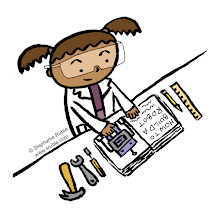I got there the night before the conference started, so I had a chance to have dinner with Mindy and meet new friends like Leslie, Marie, and Ann. And the next few days, it was fun to meet Kelly, Rita, Julie, Pamela, Natishia, Kim, Janice, Ann Marie, Karen…and a whole bunch more people (I am so bad with remembering names, so please forgive me if I accidentally left you out, or jog my memory if I’ve forgotten your name, and I will add you.)
And now for the notes.
Luckily, Cheryl Klein has posted the notes from her talk here: http://mysite.verizon.net/vzeqjo1w/i
Other comments that she had:
- They are looking for authors and illustrators that have a unique voice and style – something extraordinary / special.
- The focus of your book should be the overall emotional effect or journey. When editing, cut everything that’s not contributing or distracts from that.
- Publish 10-15 hardcover literary books a year (1/2 of the list are foreign books)
- Accepts queries from new & unagented authors – include something that shows what the book is really about, emotional content, or a small excerpt, etc.
- Start a story by getting the reader hooked first and not doing an info dump. You can time release back story in a novel. Examples where this is done well: Speak by Laurie Halse Anderson, and the first Harry Potter book.
Lindsey Barrett George
- Something must happen to a character in a book (even a pb)
- A pb has to work on many levels. Some examples: art, text, story, counting, friendship, etc.
- Her editor rejected one of her picture books. She looked at it again, found the core of the story and deleted everything else. (She kept only one verse from the whole thing.) She said that everything in the pb should be about the core of the story. BTW, that pb is now one of her most popular and best selling books.
- A Picture Book Is About
- Turning the pages, and how each picture follows the other ones
- Pictures and text that both tell a story. Sometimes pictures, sometimes text. They must balance each other out
- It doesn’t have to have a happy ending, but it does have to have a satisfying ending
- It is about an emotional reaction of experience
- Three Steps for an author/illustrator making a book
- 1. Writer’s job is to write an engaging story
- 2. Designer’s job is to make them want to know what happens next (page turns)
- 3. Illustrator’s job is to make them love and/or care about what you draw
The rest of these notes are from general sessions
Heather Delabre
- On inappropriate anthropomorphism: "If there’s no reason for them to be animals, they should be people, not kids with fur" (or feathers). To test for whether or not they need to be animals, she said that you should take out the animal stuff and imagine them as human characters. If that works, then nix the animals.
- Brevity is the key for a synopsis
Mark McVeigh
- Dutton is phasing out chapter books and easy readers, so you shouldn’t sub them
- They are also not doing novelty books anymore, like lift-the-flap books.
- Don’t send email subs.
- Send query and synopsis – even for a pb!
- Synopsis should include character, plot, & setting.
- The synopsis should be succinct, but intriguing.
Mary Lee Donovan
- Their list is 50% Walker UK, and 50% Candlewick
- They try for an international audience
- No email subs.
- Has eclectic tastes
- Likes complete novels
Julie Romeis
- Looking for new, fresh, American voices
- MG
- Contemporary stories
- They try for an international audience (Bloomsbury UK too)
- Likes fun, commercial, really kid friendly books
- No email subs


No comments:
Post a Comment